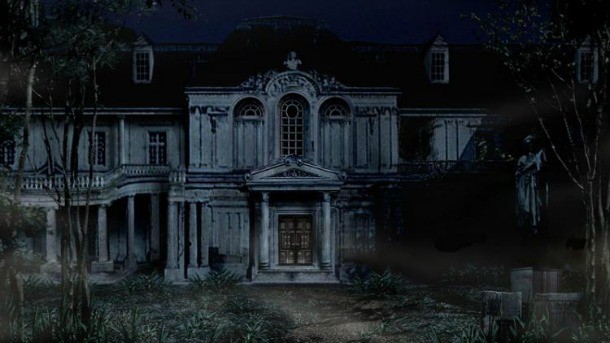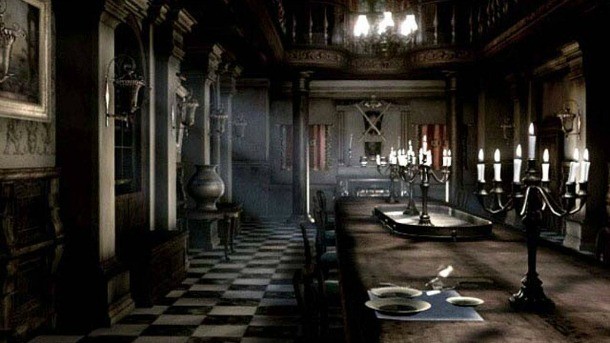Our extra-large special edition is here. Subscribe today and receive the 25% longer issue at no extra cost!
Places: Spencer Mansion

Settings in video games leave lasting impressions on us all. Sometimes more so than the characters, an engrossing atmosphere can lay the foundation for an amazing title. In this ongoing feature, we revisit some of our favorite settings that etched a permanent place in our memories.
Spencer Mansion
Resident Evil released in 1996. It didn't ignite the survival horror genre, but it definitely fueled it. Exploration and careful planning are paramount, encouraging players to consider every choice available. The all star cast of characters is globetrotting in the more recent installments, but the confined spaces of the first game are second to none when it comes to scares. From the moment you escape a pack of infected dogs to the moment you finally escape the iconic residence, it's a memory that can't easily be forgotten; no matter how hard you try.
In the foothills of the Arklay Mountains, near the quiet town of Raccoon City, lies Spencer Mansion. Built to house the secret experiments of Umbrella Corporation co-founder Oswell Spencer, the imposing structure stands in stark contrast to the woods surrounding it.
The entrance hall of Spencer Mansion suggests a simple layout: two floors with several doors leading into opposing wings. A few more doors off of the dining hall hint at a slightly more complex layout than initially conceived, forcing players to wander farther into the dimly lit corridors.
From the moment you receive the first invaluable key, you’re absolutely overwhelmed by the sheer number of routes through the mansion. New, unexplored corridors will make you cringe at the unknown horrors haunting them. Racking your brain to connect all of these interlocking passageways and obscure rooms is enough to keep you on your toes while exploring the foreboding hideaway.
Little by little, players become familiar with the awful residence. Every shortcut and stairway burns itself onto your mental map. When you’re low on health, you suddenly remember the least dangerous routes to take and where the nearest safe room lies. The door with the damaged handle should only be used when absolutely necessary, because overuse will break it. If you have an old key, chances are you’ll need to use it on a locked desk drawer tucked away somewhere. These jumbled, seemingly useless facts all coalesce to create a mental dictionary that increases in size every time you play the game. Even as it opens up to the surrounding grounds and underground labs, the steady pace of learning in the game creates a sense of ownership that few games have approached today.
Any confidence gained from learning the mansion grounds is quickly replaced by panic with each zombie encounter. Unlike the latter half of the Resident Evil franchise, its earlier games craft an experience wherein the lumbering zombies are a threat even in groups of one or two. The uncertainty of available ammo heightens every struggle as well, as every inaccurate shot dims the chance of survival until the next typewriter save point.

The secret beneath the cemetery can only be unlocked by acquiring the four death masks scattered across the grounds. Clever puzzles involving suits of armor, chromatic lighting, and lethal plant life will test your mind, but the mask in the attic will test your courage. In this dusty, forgotten corner of Spencer’s retreat lies Yawn the snake, a hulking python, awaiting anyone foolish enough to cross his path. The size of the beast is enough to deter even the hardiest survivors. Should you escape with the mask he guards, savor the moment; you’ll see him again.
The mansion grounds host a few surprises as well. An old shack resting on the tree-lined path is an ominous presence upon arrival. The echoes of your own footsteps are the only noise to break that silence, until the front door creaks open. A shovel striking your skull leaves you wondering where everything went wrong, but the confusion is erased as you stare upon the result of years of Umbrella experimentation: the demented husk of Lisa Trevor, the architect’s daughter. The terror that grips you here lingers throughout your exploration of the guardhouse and gardens of the mansion, only subsiding once you return to the mansion you know so well. Even now, though, the fight is far from over. When you return from the guardhouse with the Helmet Key in hand, ready to unlock the last few doors the mansion holds, the Hunters take over.
These abominations stalk the hallways with the precision of wolves - leaping at the first chance - eager to rend the flesh from their prey. If you’re not decisive enough, a quick death awaits at the claws of these beasts. Everything you’ve learned about the layout of the mansion becomes the critical focus now. The locations of the remaining locked doors are burned into your memory, but ammo conservation and split second decisions get you there.
And yet, for all of the adrenaline-pumping encounters with the mansion’s infected inhabitants, a greater force sets itself against the player until the very end. More so than the lurking menace of a zombie attack, the isolation that pervades Resident Evil is what makes Spencer Mansion such a memorable setting. Other survival horror games can make you feel lonely; Resident Evil has honed that solitude to an art form. Shutting off the game is jarring, requiring a rough transition back into a world where danger doesn’t lurk around every corner and human interaction is a normal occurrence.

Get the Game Informer Print Edition!
Explore your favorite games in premium print format, delivered to your door.
- 10 issues per year
- Only $4.80 per issue
- Full digital magazine archive access
- Since 1991









